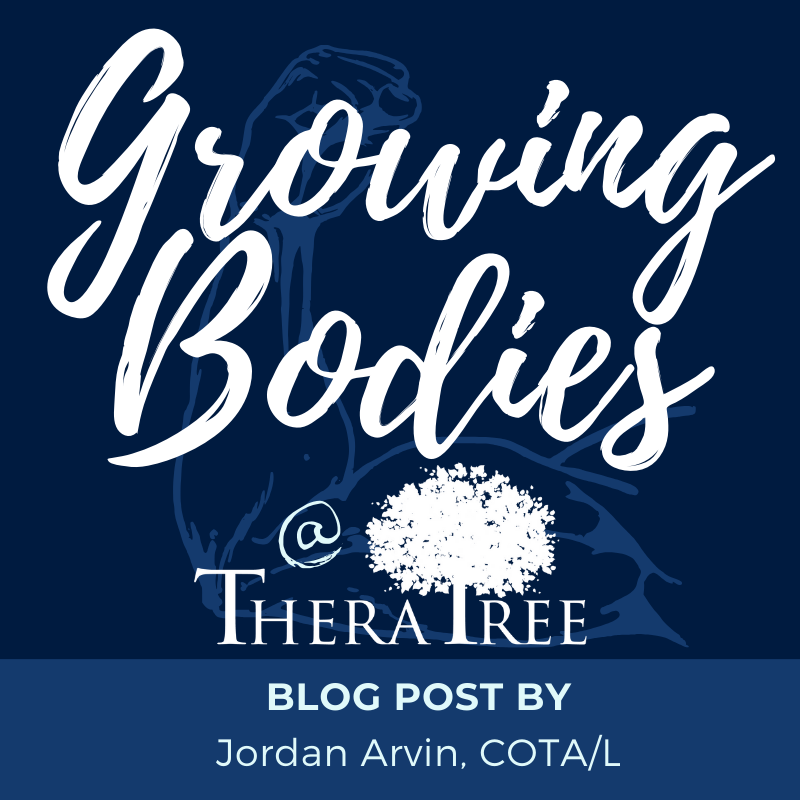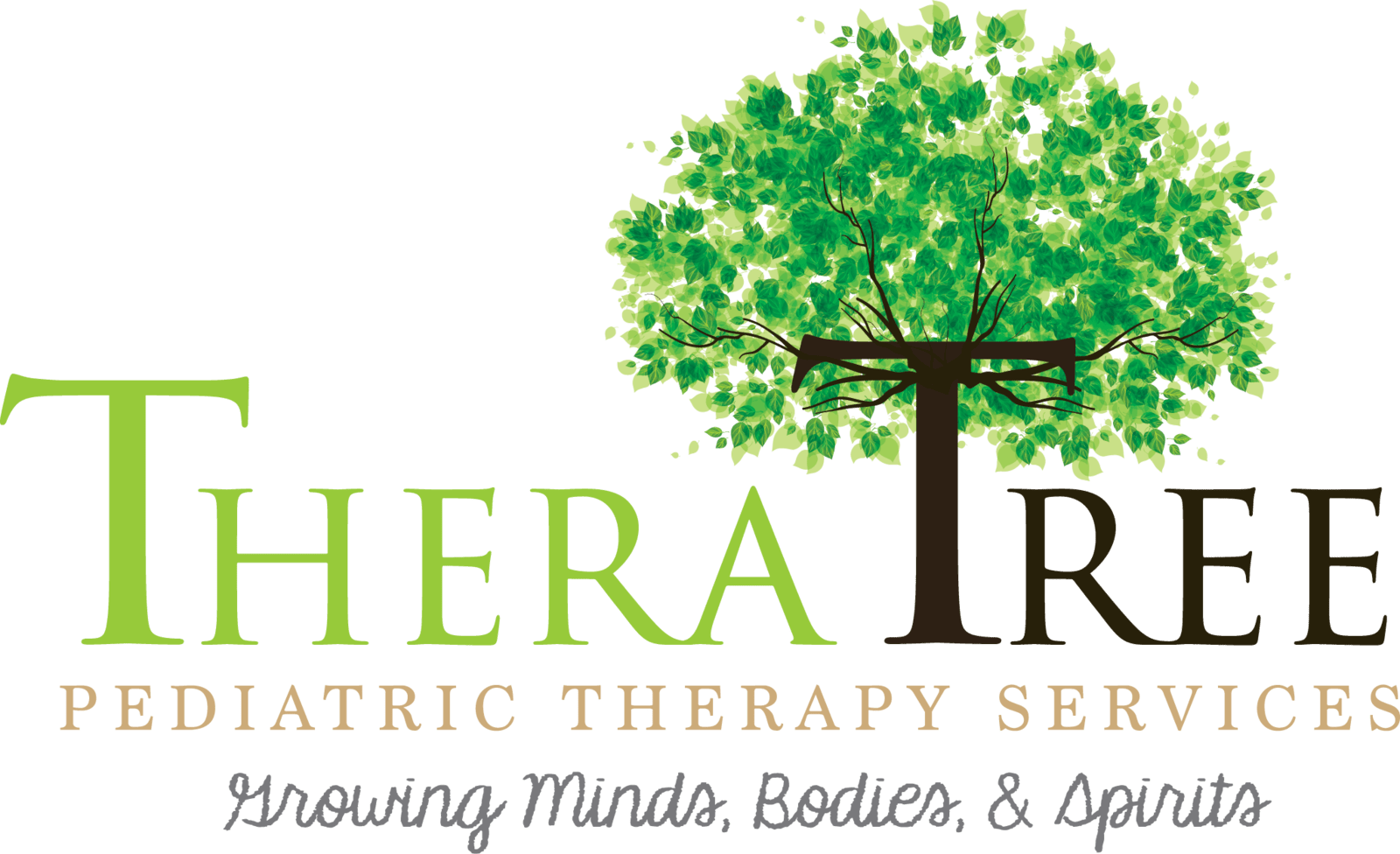by Jordan Arvin COTA/L

A word from our Owner/CEO, Jessica Hatfield: ” It is my role to give children and families access to living happy, healthy, and well balanced lives. This access is created through developing the s kills and giving the tools for living life.
It's an access for their VOICE to be heard, their BODY to move, and to become INDEPENDENT...
It is my mission to create a communityaligned in this vision; to give children and families access to happy, healthy and well-balanced lives through removing barriers. Together, we grow minds, bodies, and spirits.
Here at TheraTree Pediatrics, our mission is: a well-balanced child mind, body, and spirit; a well-balanced family. In this blog series, we will discuss the parts of our vision, why they are important, and how we address these items at TheraTree. We do so through occupational, speech, and physical therapy.
Growing Bodies by cultivating strong, agile muscles and motor skills.
Occupational Therapy
Sensory Integration
We, as human beings, have eight senses. The five basic senses are touch, taste, smell, hear, see. In addition to that, we have three senses that are a little more complicated. Those are vestibular sense, proprioception, and interoception. All of these senses help us grow our bodies by processing sensory input into information or brain and body can use. For example, if I child touches something hot, they know it is hot. Being able to process that sense and know to remove yourself from the hot item prevents bodily injury. Seeing and hearing that there is a car coming, allows a child to keep themselves safe when crossing the street.
The sense of proprioception has to do with being aware of where the body is in space and how it is moving. Proprioceptive receptors respond to the stretching and compression of muscles and joints. Proprioceptive exercises, also known as heavy work, are usually calming for children, allowing them to organize their body and be ready to work or learn. Activities that allow children needed proprioceptive input include jumping, pushing, pulling, deep pressure, carrying heavy objects, among other things.
The vestibular sense processes movements of the head, inner ear, and the force of gravity. This is the sense that lets a child know they are out of balance or dizzy or in an unsafe position. Activities like swinging and spinning help to regulate this sense. This helps your child be safer in their environments and more aware of their bodies.
Interoception is the little-known sense that helps us identify what is going on inside our body. It is the sense that helps you recognize the feeling of being hungry, needing to use the restroom, or being thirsty. We use this sense in occupational therapy to help children learn their bodies. This sense can be mastered to help a child potty train and become independent with their other ADLs. Interoception is used to help children with self-regulation. We talk about how the body feels after various movement activities to help a child get in-tune with his or her body. This awareness helps a child identify when they are sad or anxious or angry so that they can take the necessary steps to regulate back to happy or ready to work and learn state of mind.
Motor Skills
Occupational therapy practitioners help children move their bodies as needed for completing their daily tasks. This means a child having all of the motor skills and body movements necessary to be as independent as possible with their activities of daily living (ADLs). This means that in order to stand at the sink to brush their teeth, your child has to have the balance to stand there unsupported, the coordination to use one hand to brush his or her teeth and switch hands if needed. This task that we all do daily has a lot of motor skills involved. If your child does not have the proper coordination or balance, they will not be able to be independent with the daily task of brushing teeth.
Knowing how to accomplish a certain activity using your body is known as motor planning. This is when a child moves their body in a certain way to achieve a certain outcome. For example, when your child encounters a toy on the floor, do they trip on it and fall? This may be the result of an issue with motor planning. Occupational therapy practitioners help a child learn to notice the toy and move their bodies in a way that they do not fall, like stepping over or changing direction.
Speech Therapy
Speech therapy practitioners help children to understand why we use certain body parts for certain activities. Speech therapy uses specialized knowledge to help children learn and say the names of the body parts. They use routines to teach language. Incorporating routines into a child’s daily life can help them learn body parts as well. This happens by talking about what we do with each part of the body. For example, knowing that it is my hands that I wash after using the restroom and it is my mouth that I use to eat lunch.
Physical Therapy
Physical therapy helps children to improve gross motor skill. This means movements that utilize large muscle groups like running and throwing. This type of therapy can also help east pain, improve movement and ability to move. A child may come to physical therapy for a number of reasons, including but not limited to bone/muscle issues, sports injuries, brain, spine, or genetic disorders. Physical therapists work to move the body through range of motion, flexibility, strength, and movement patterns. They help children learn to move their body how and when they want to.
Physical therapy practitioners encourage children to do things like hop on one foot, play on a large exercise ball, and balance on a balance beam to name a few. While this therapy may be HARD work at times, it can also be fun. Physical therapy practitioners benefit children by helping them move their bodies through play. In order for any pediatric therapy to be effective, your child has to have fun, play, and move their body.
Attached below are some videos and games that will help your child feel, understand, and move their bodies
- Parts of the Body Song: https://youtu.be/N2pUxxM8W3g
- Head, shoulders, knees, and Toes: https://youtu.be/ZanHgPprl-0
- Where is Howie’s Owie?
- Operation
How to Get Help
If you think your child would benefit from therapy services, you can:
- Complete our Patient referral form HERE.
- Contact our office for further information: (270) 688-8449 or contact@theratreepeds.com
